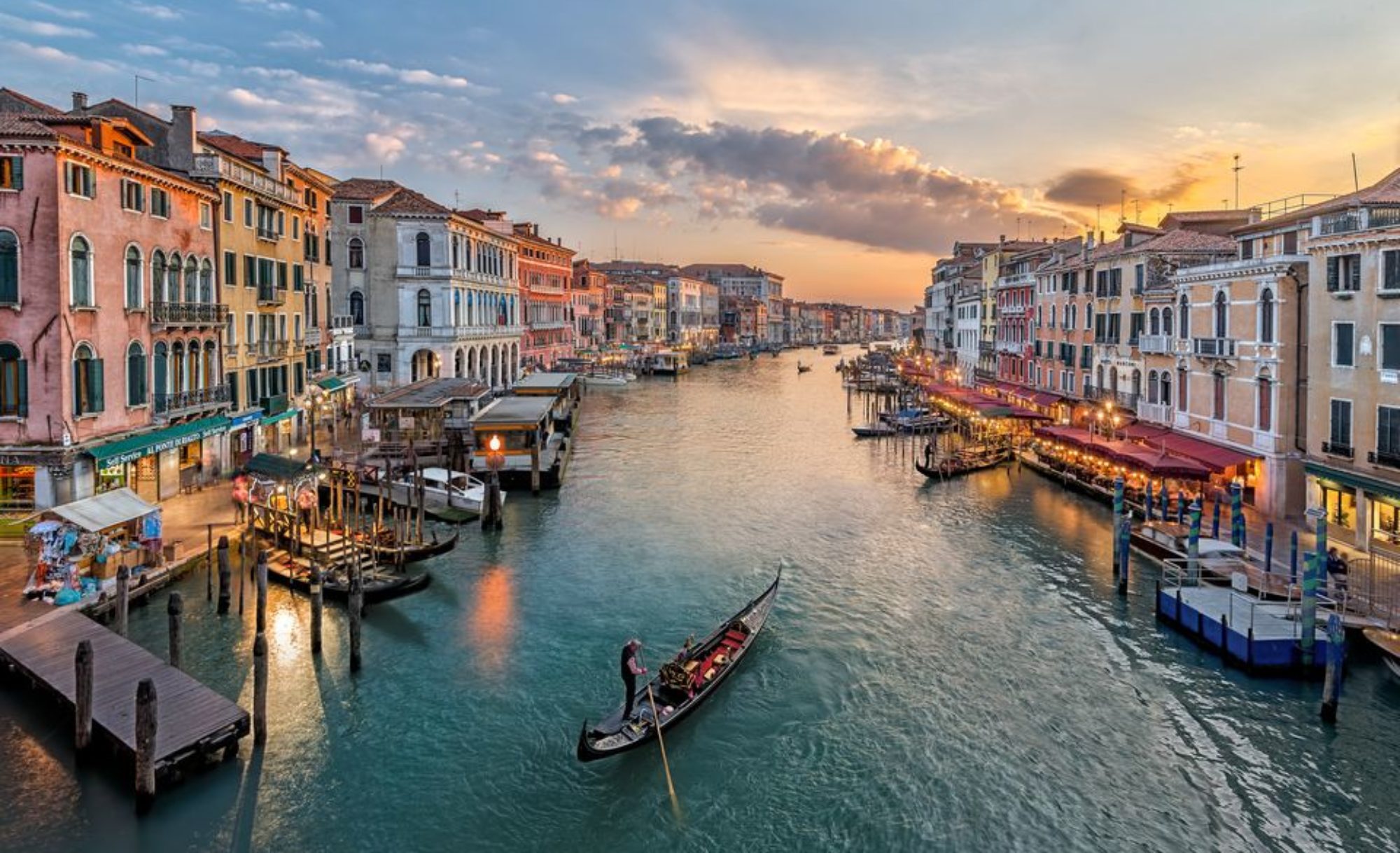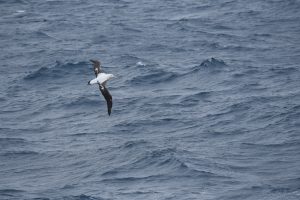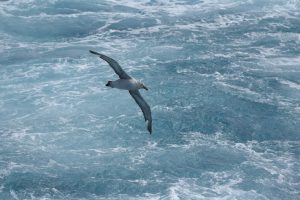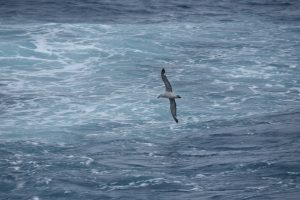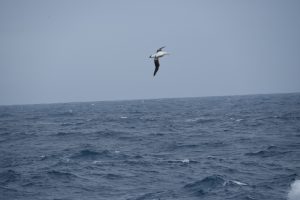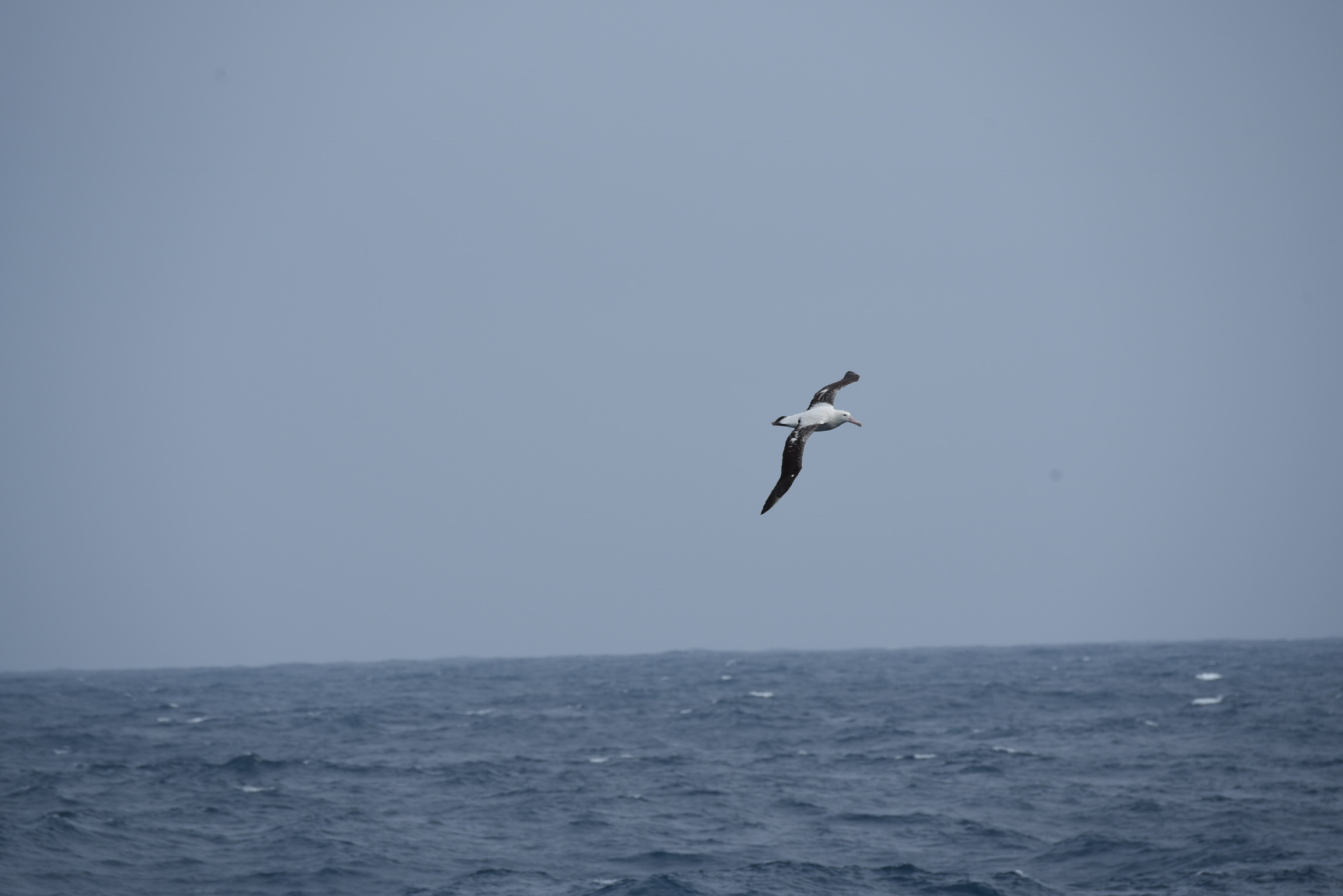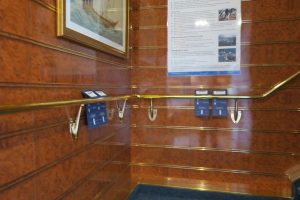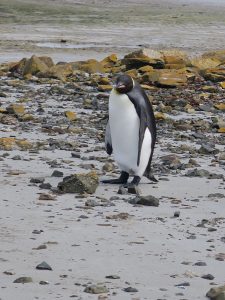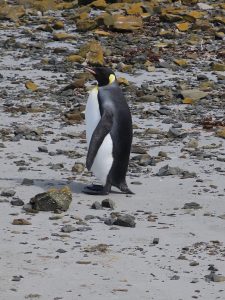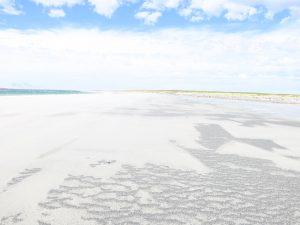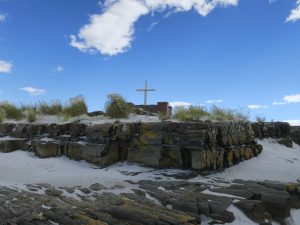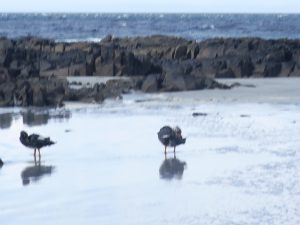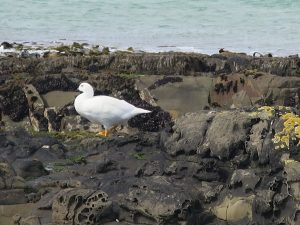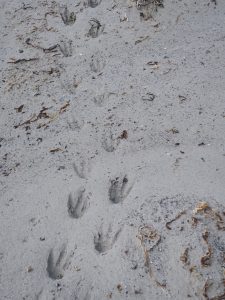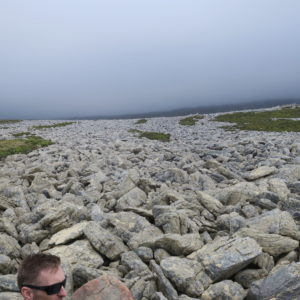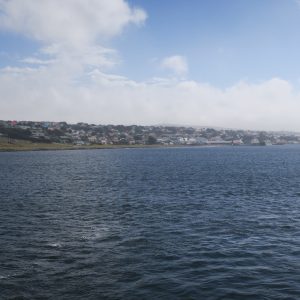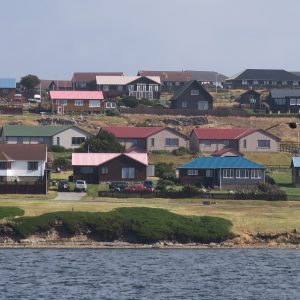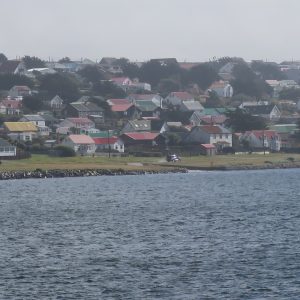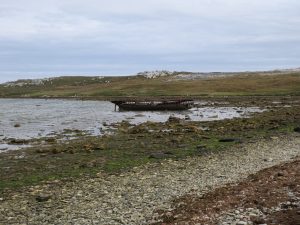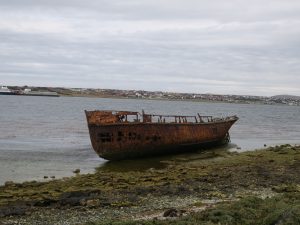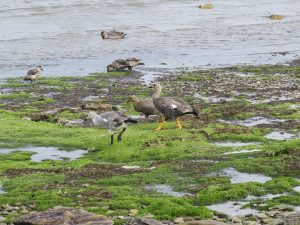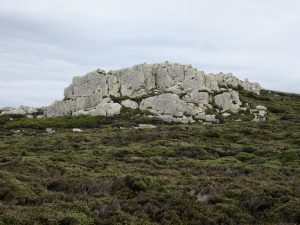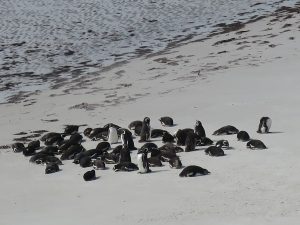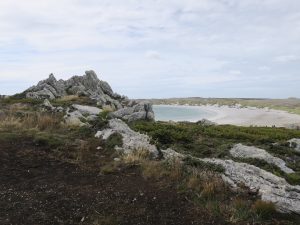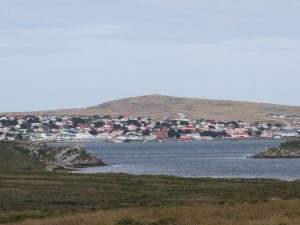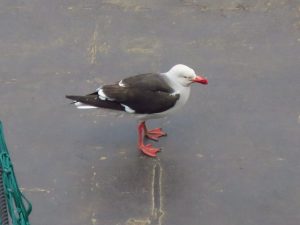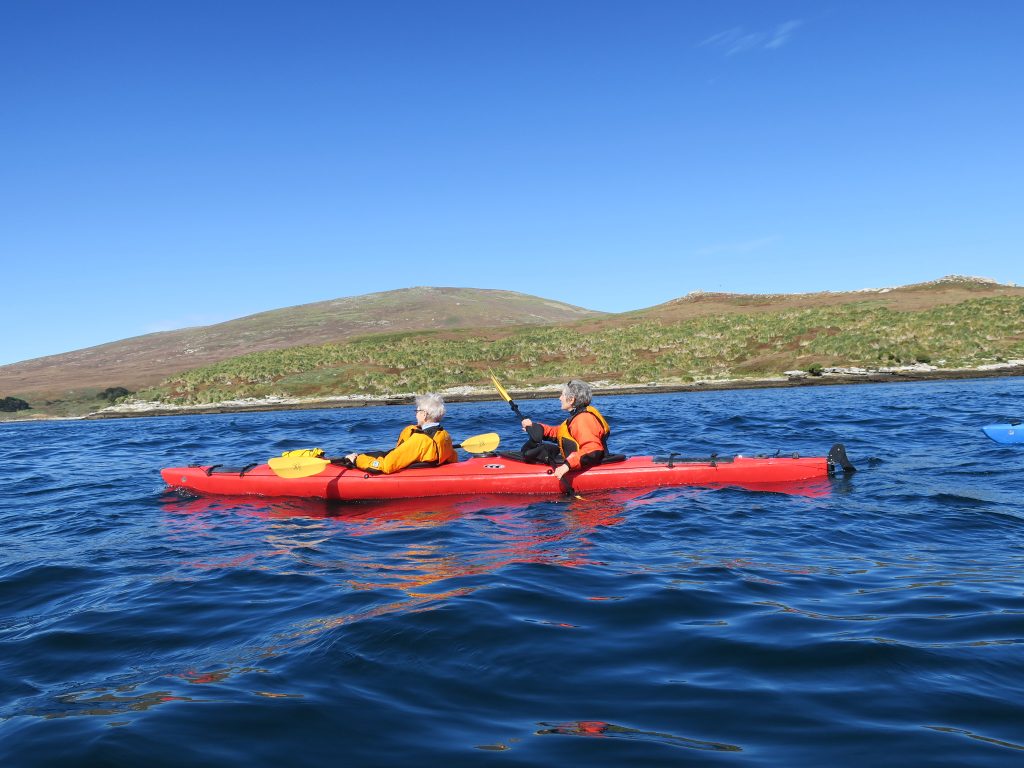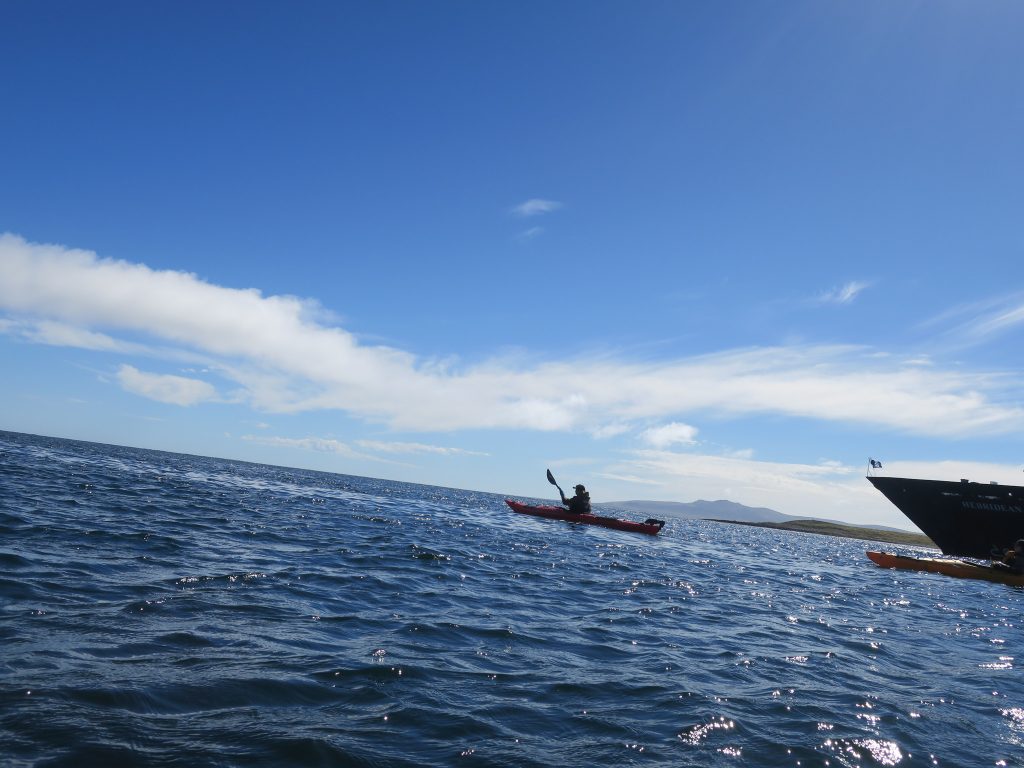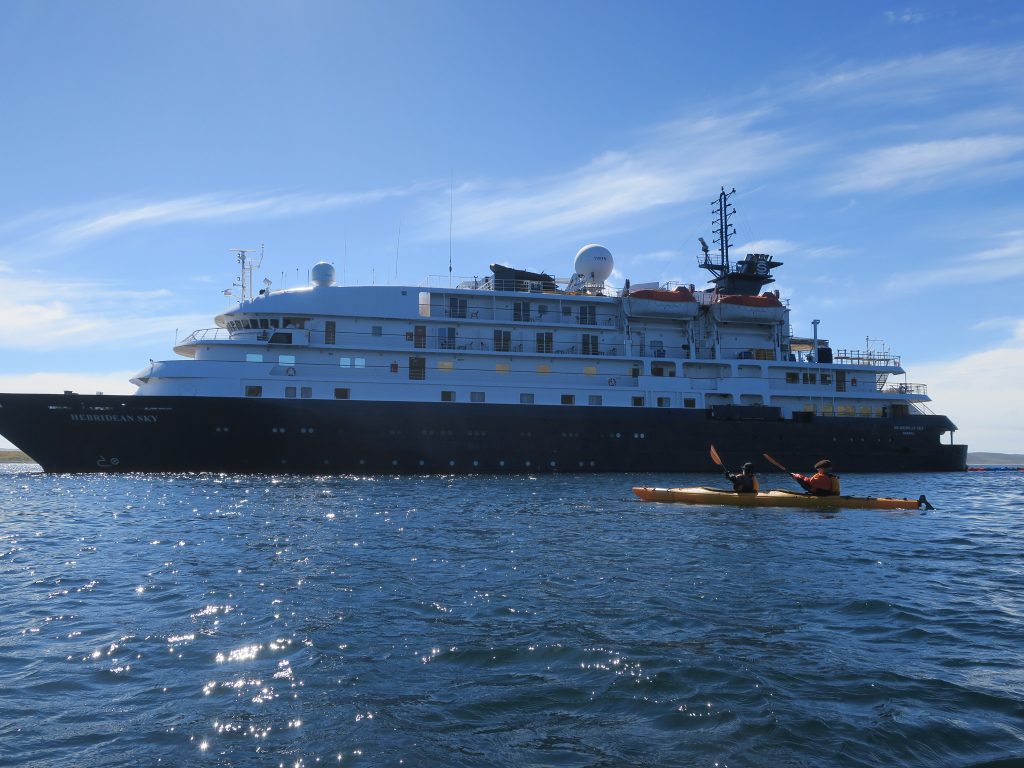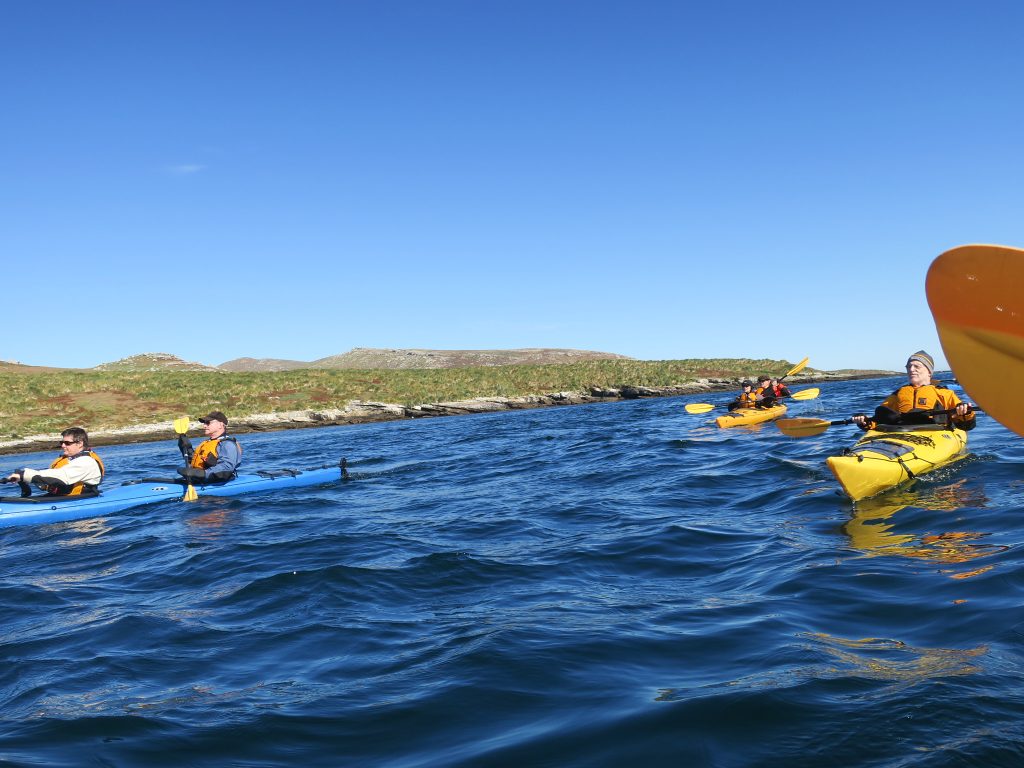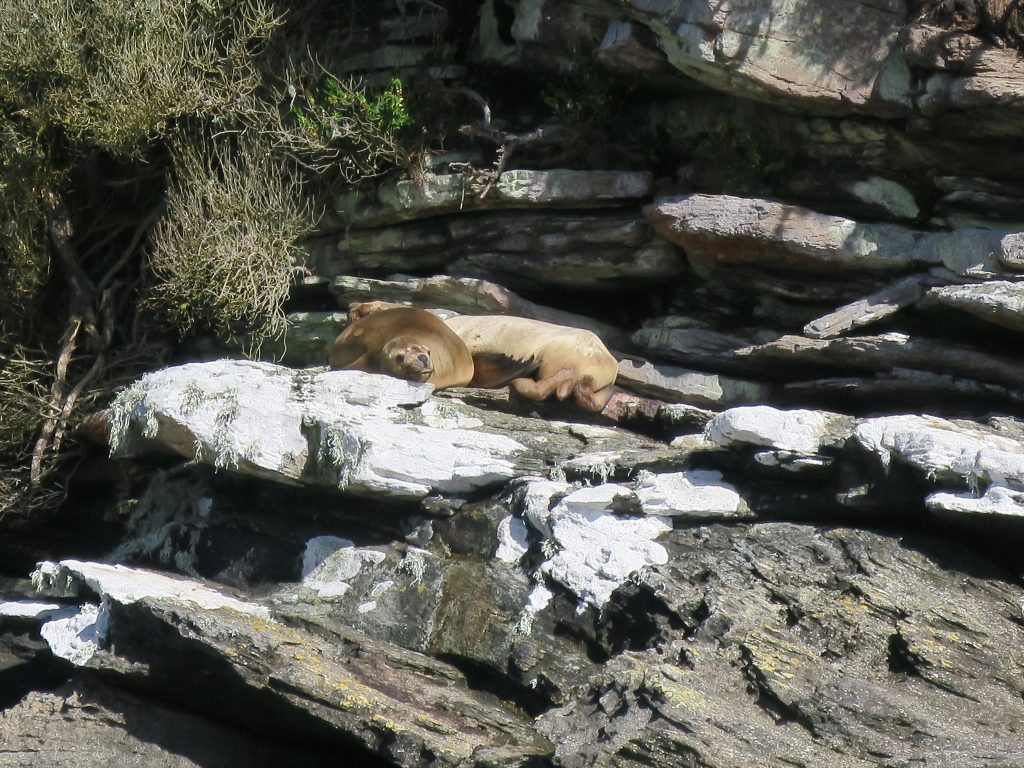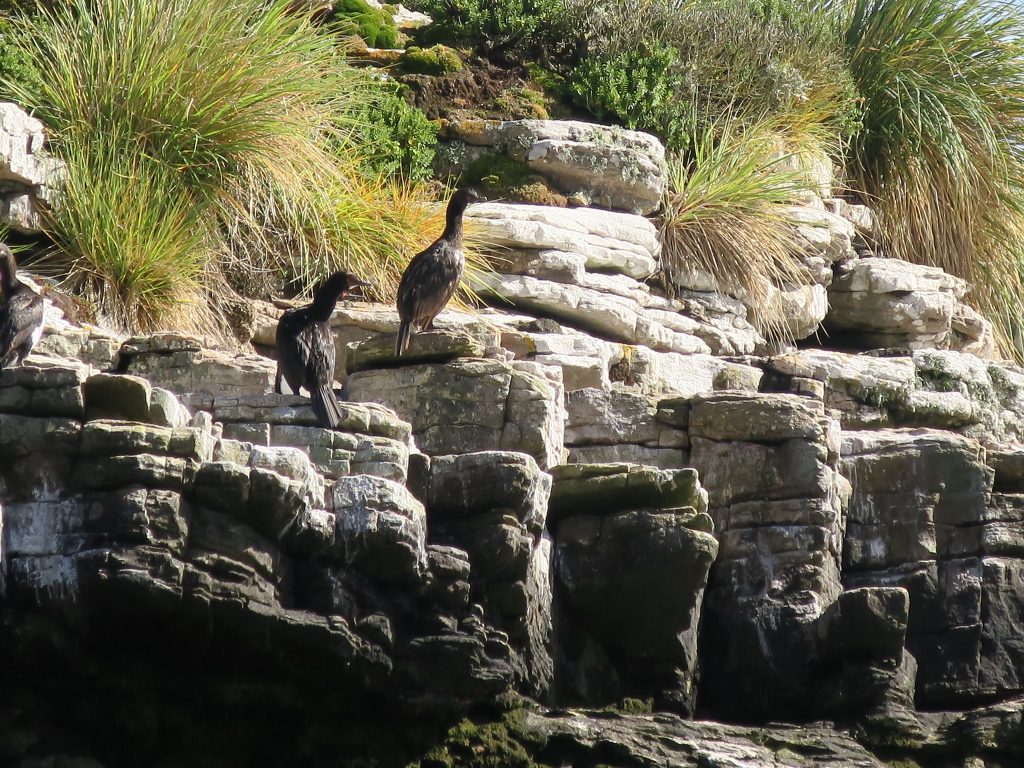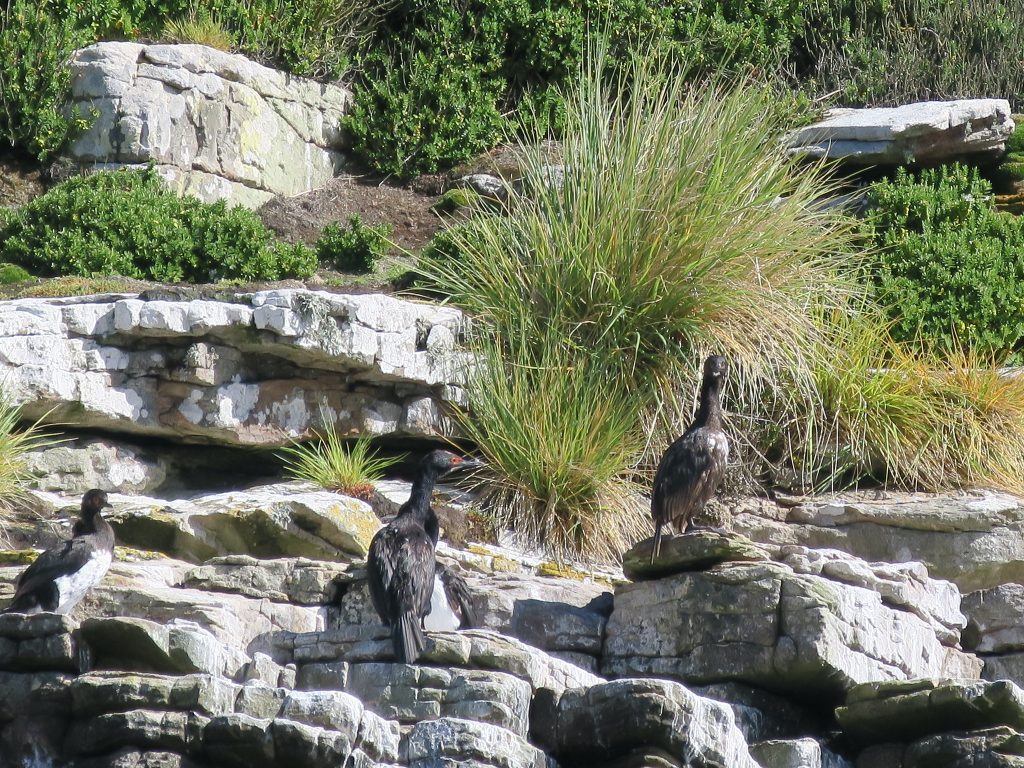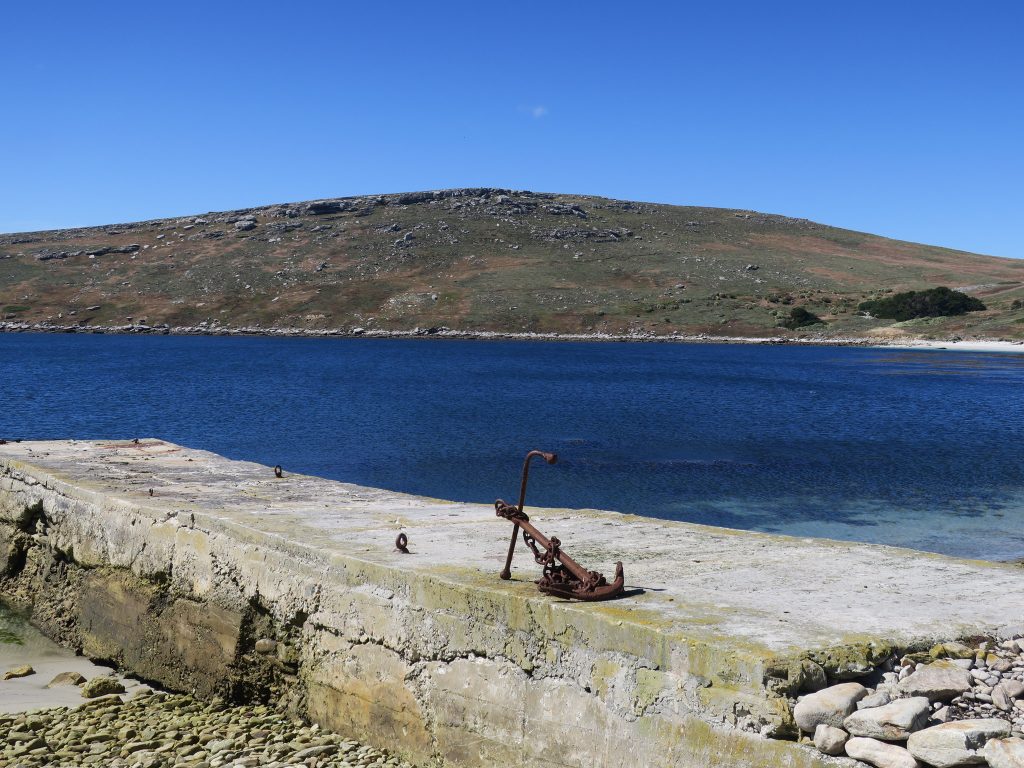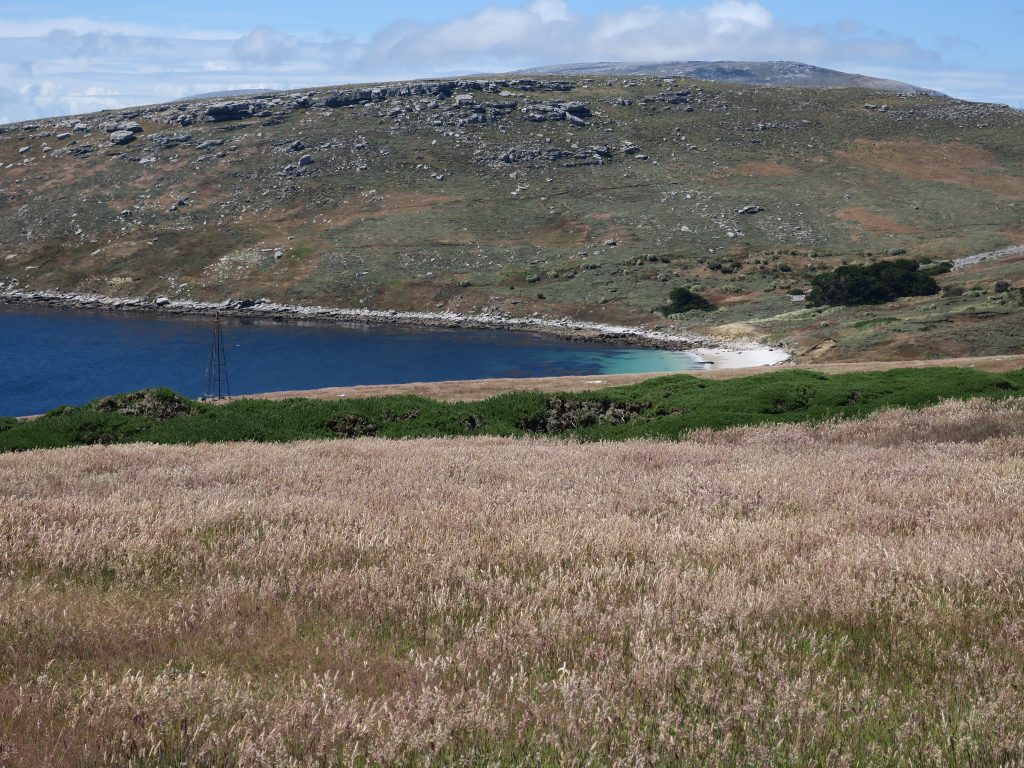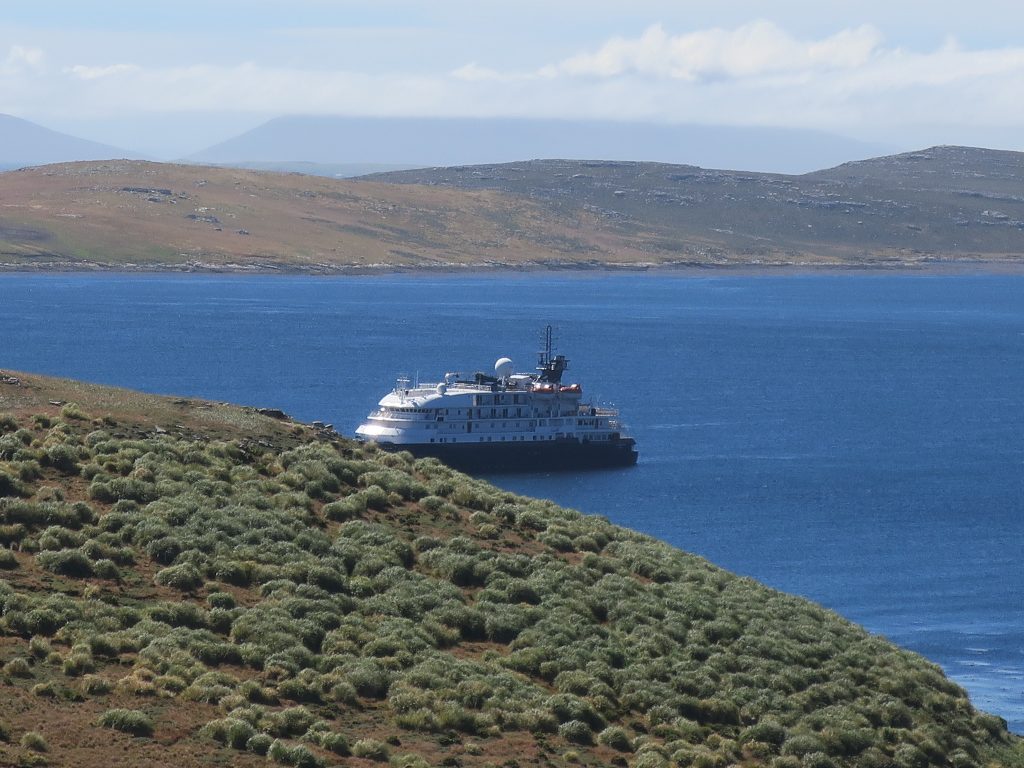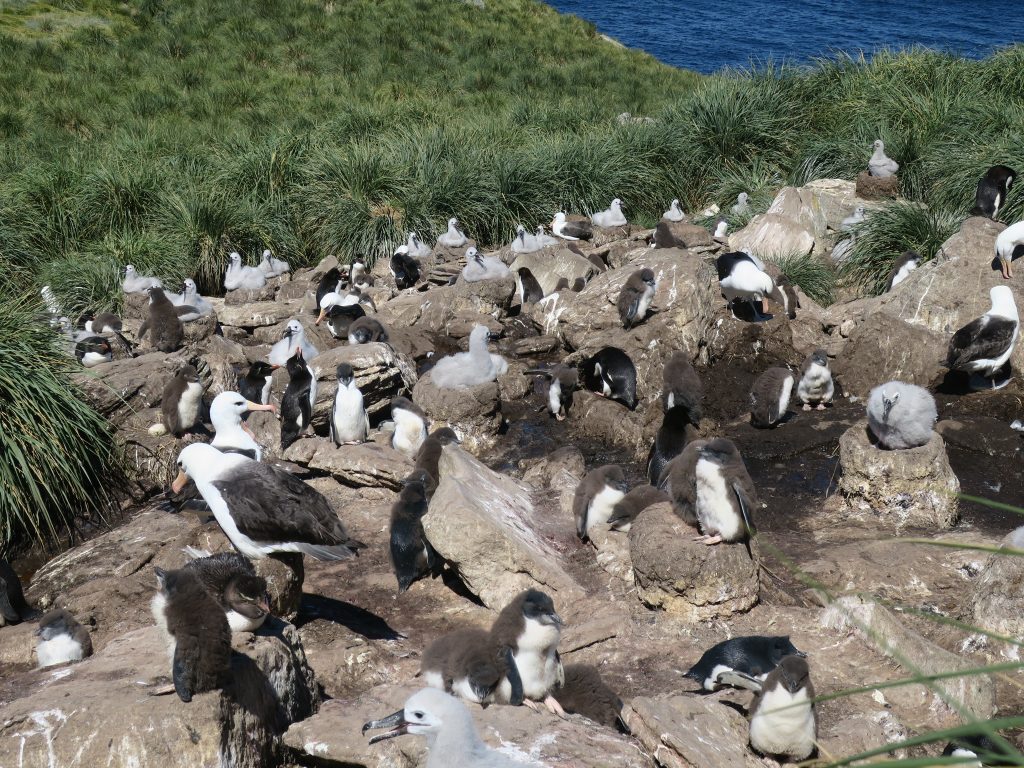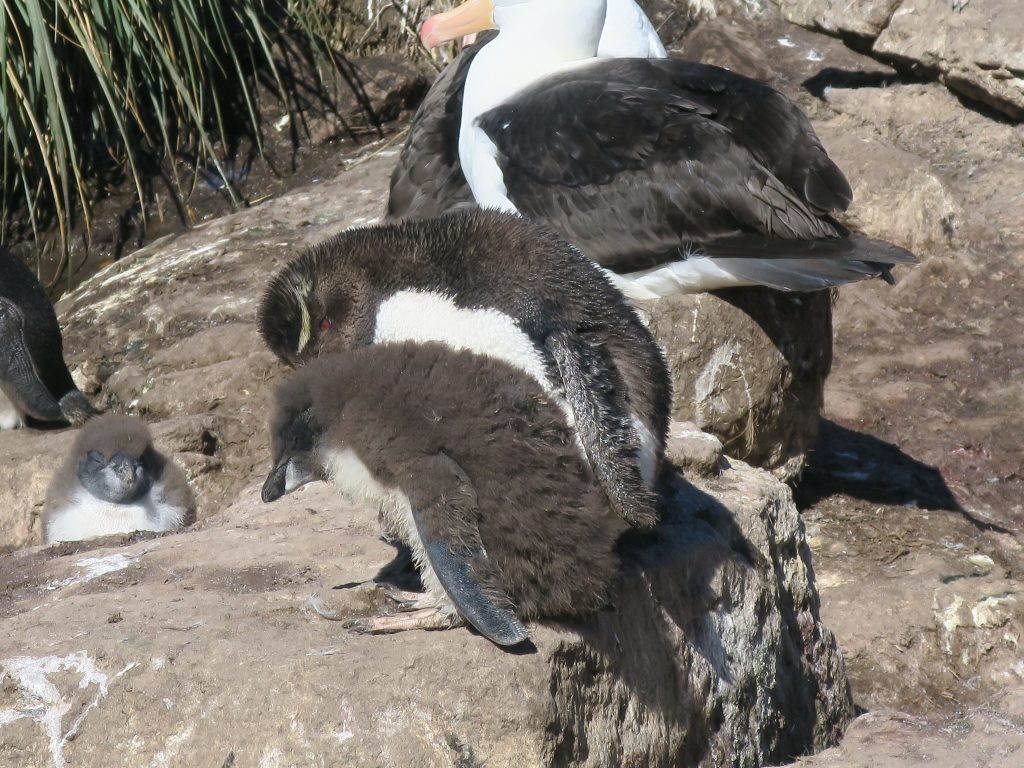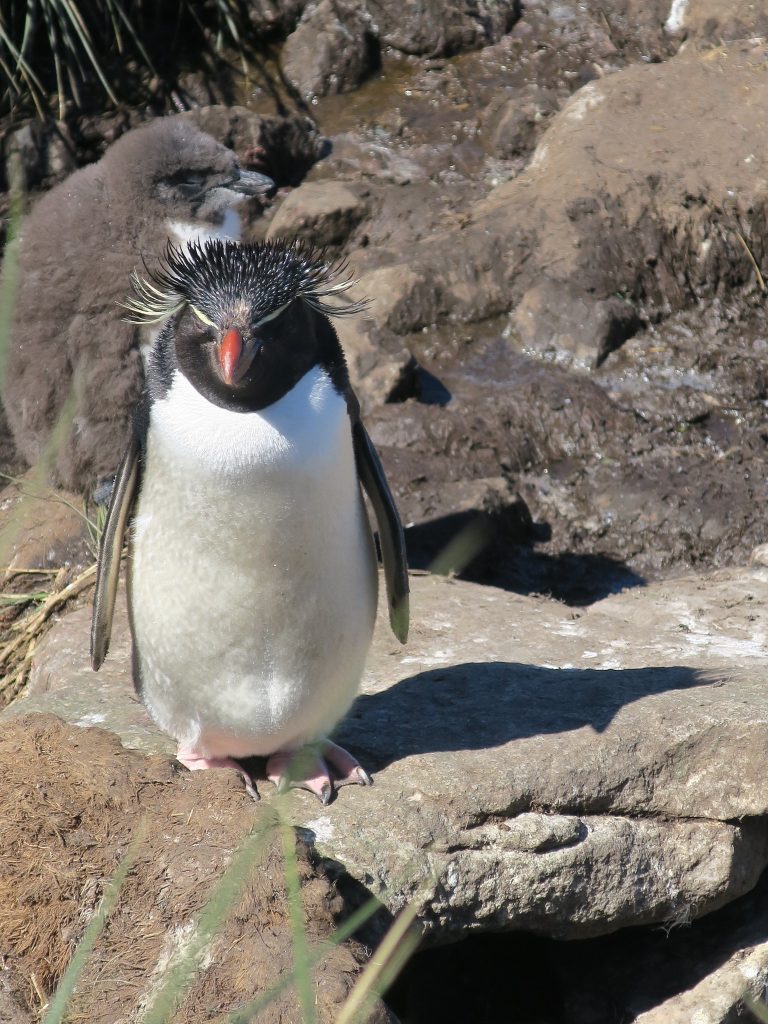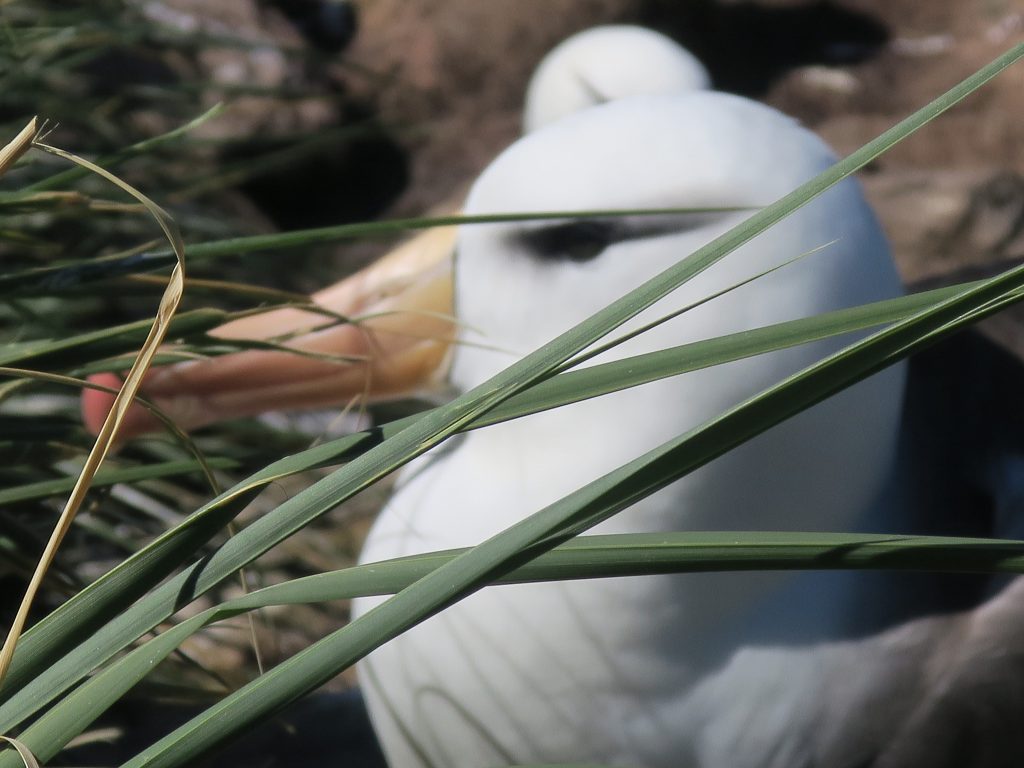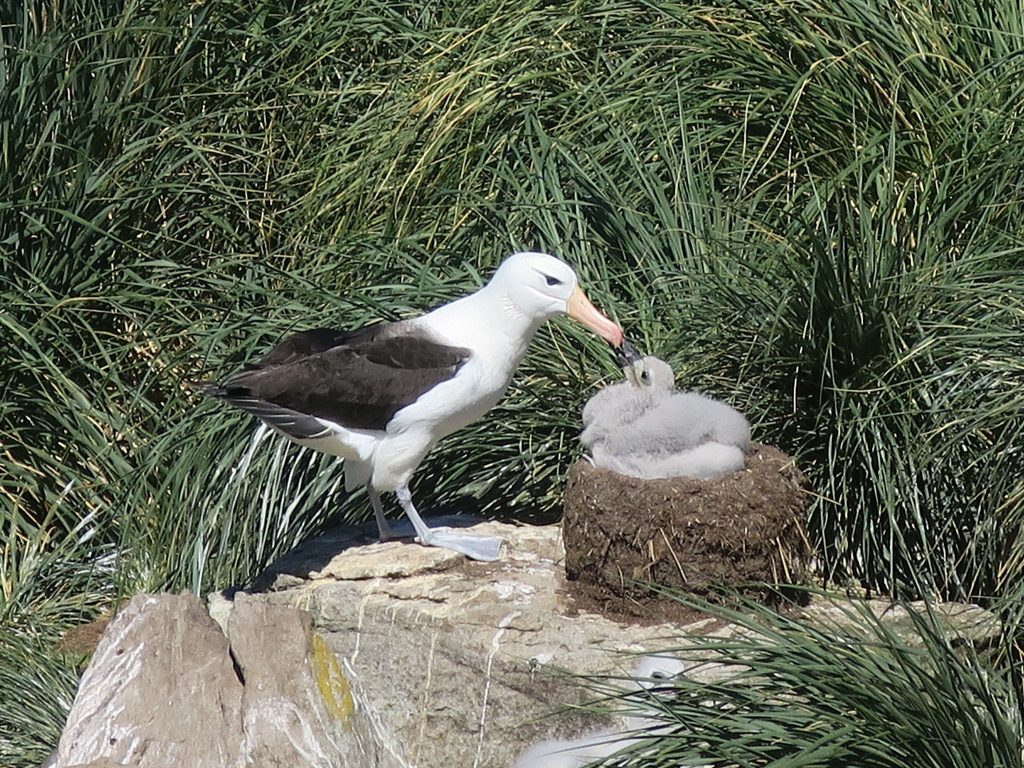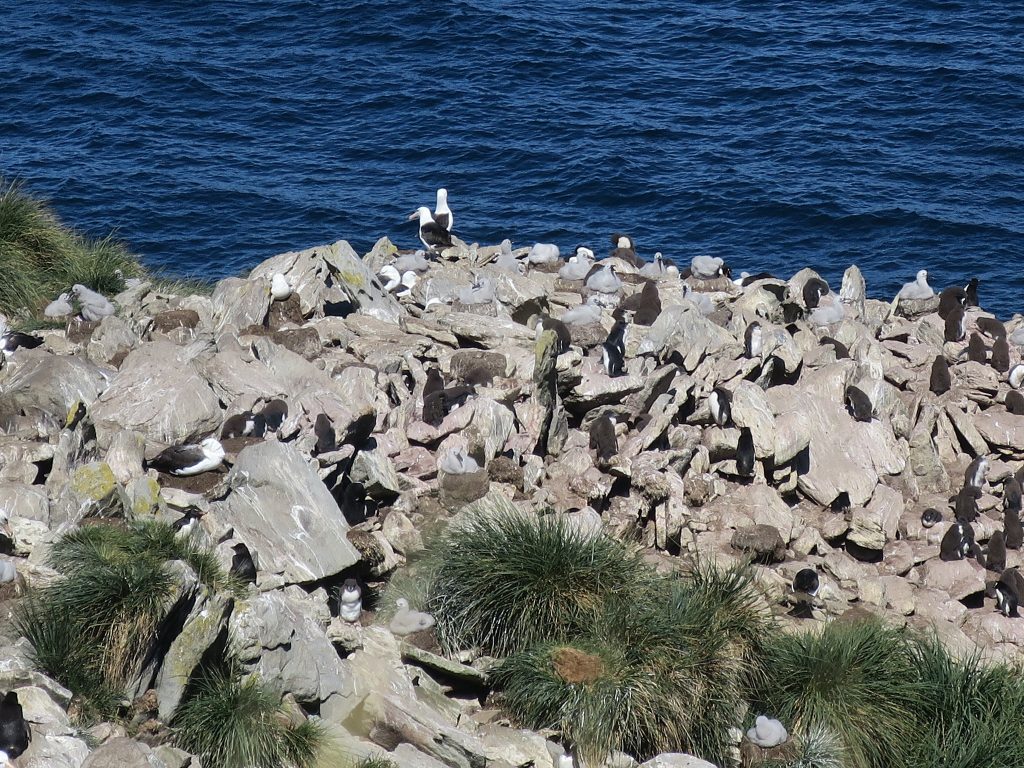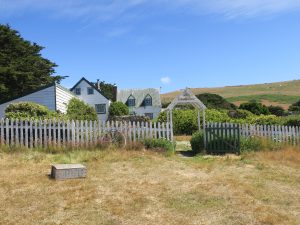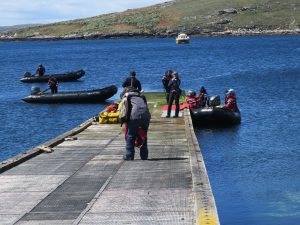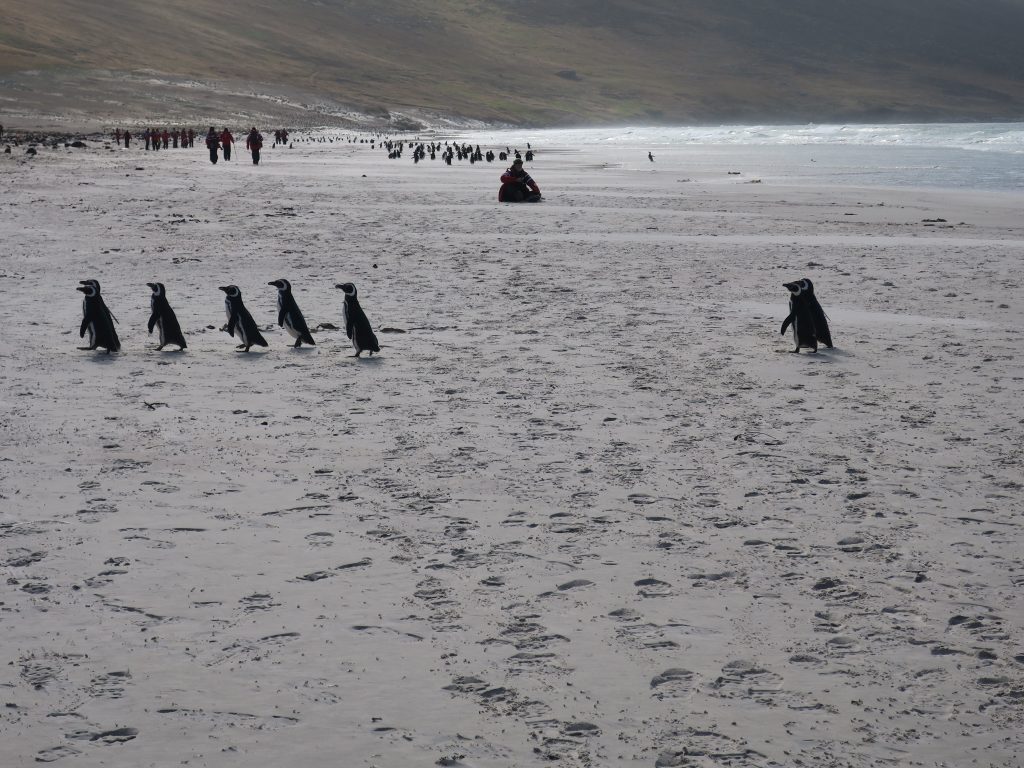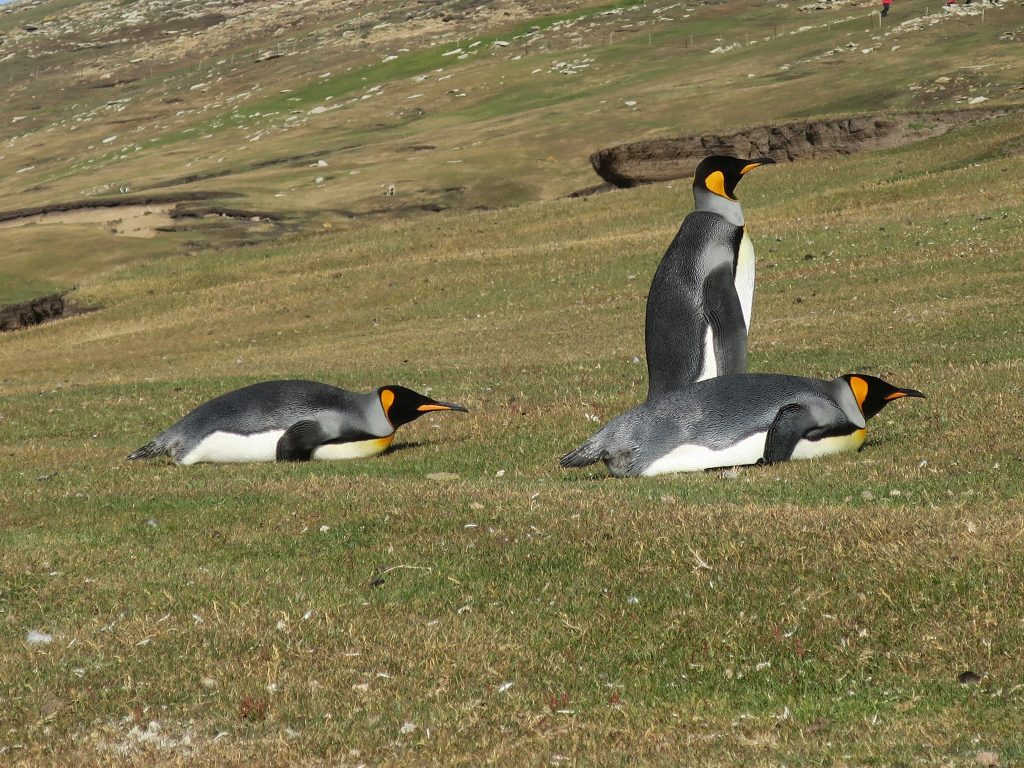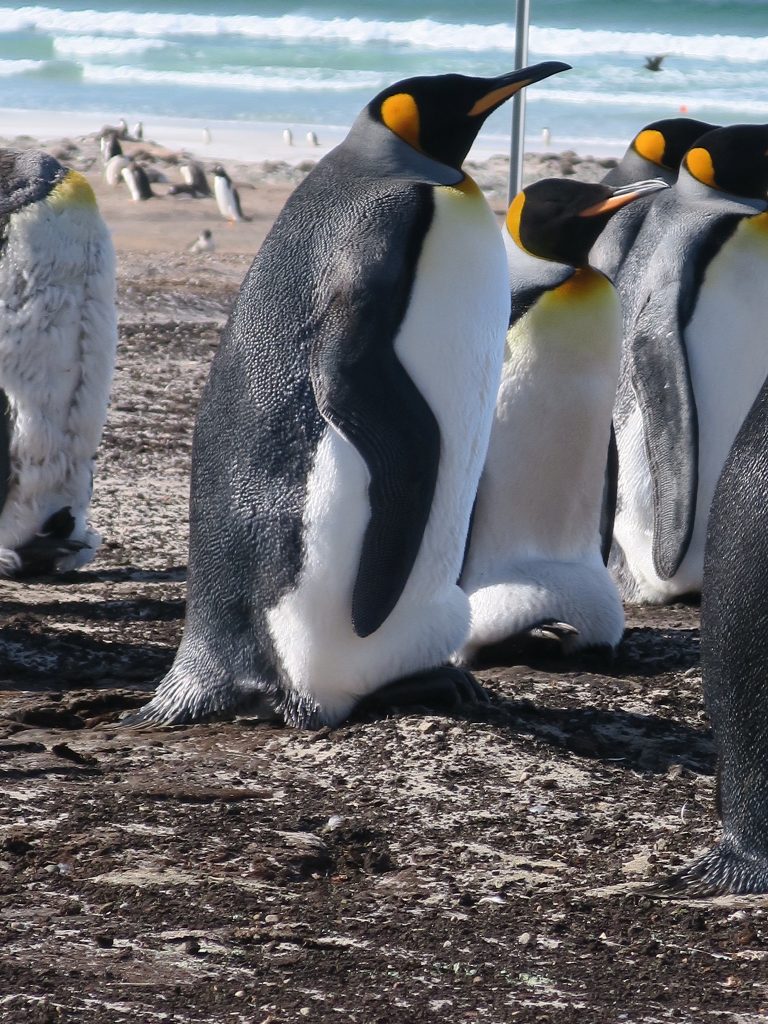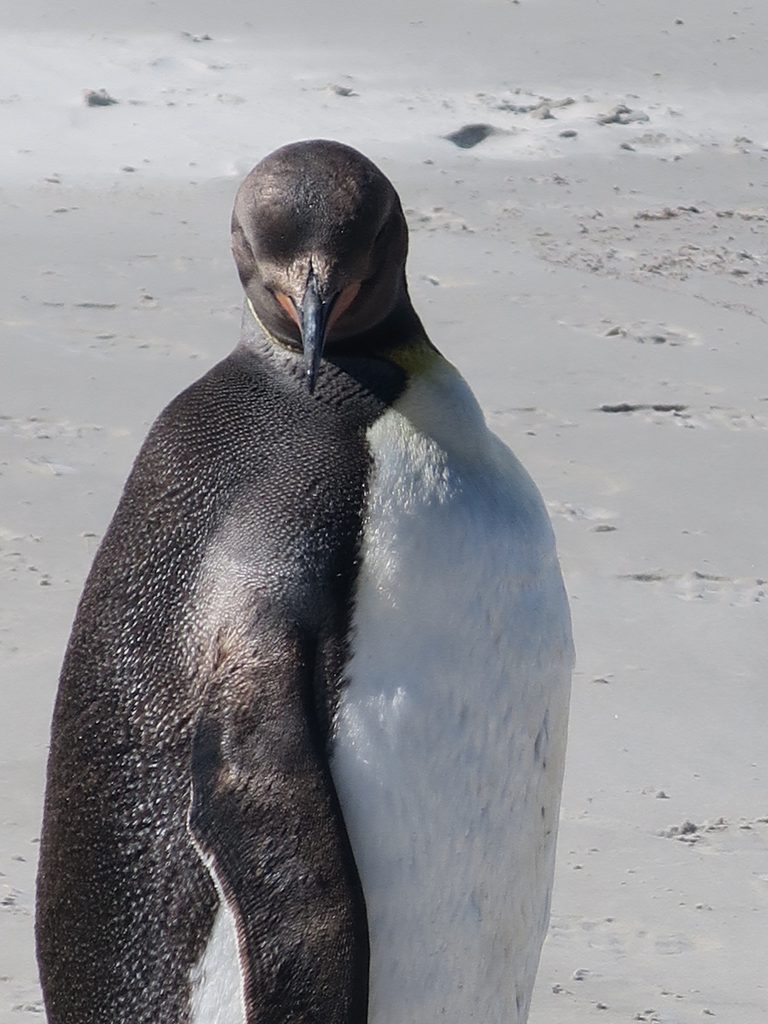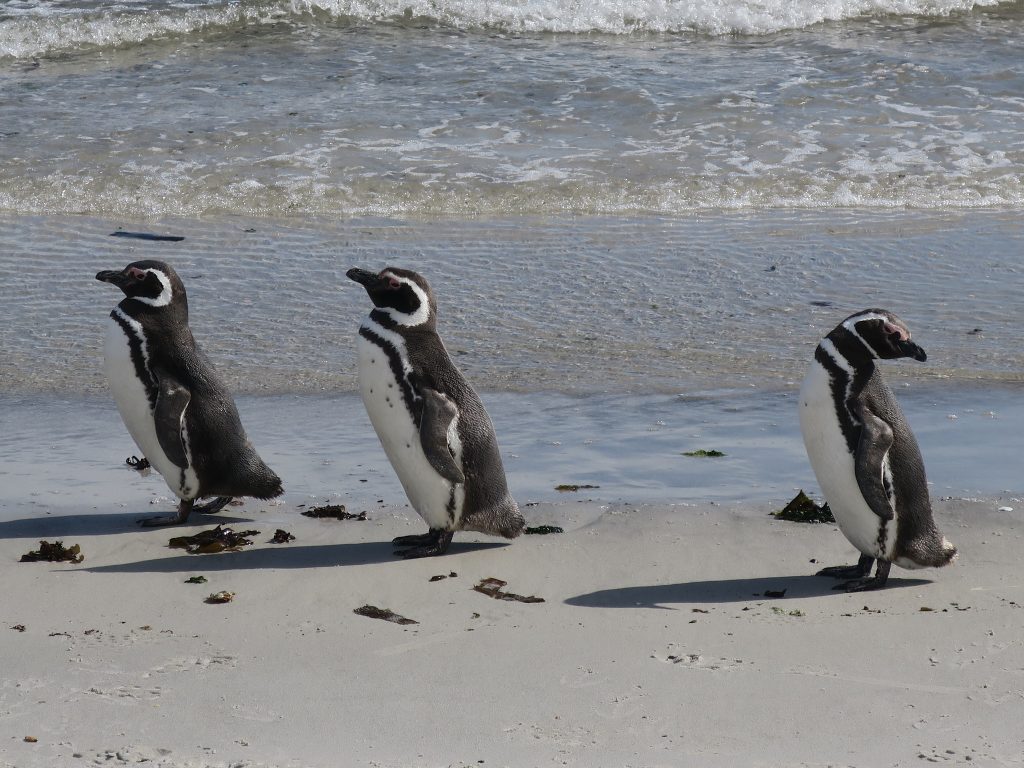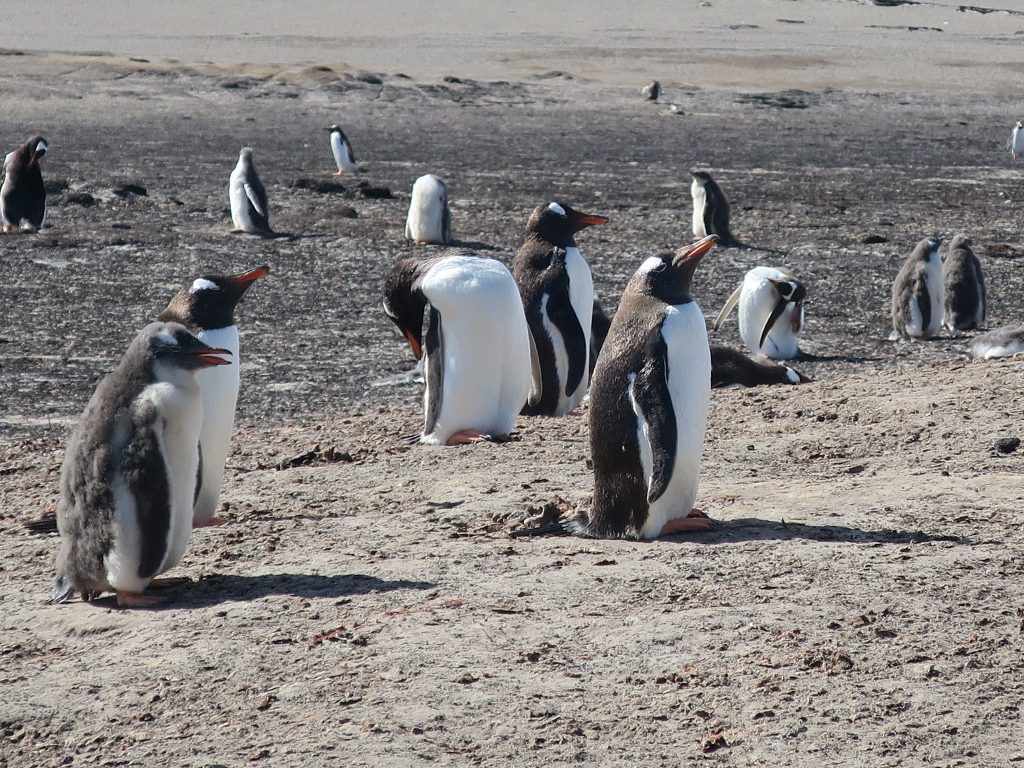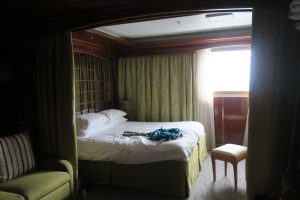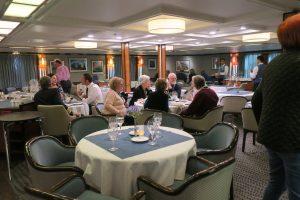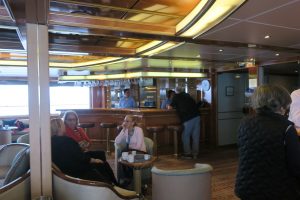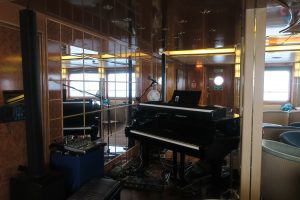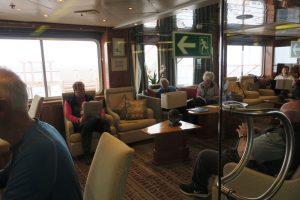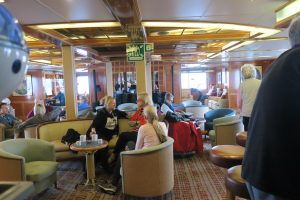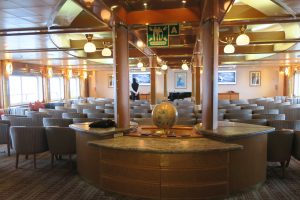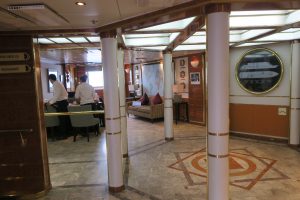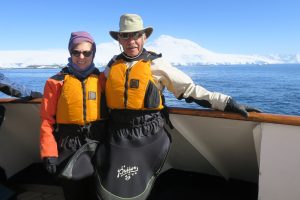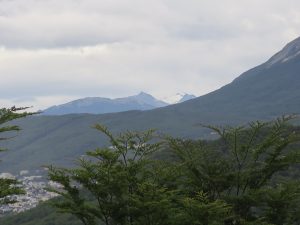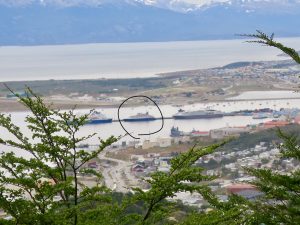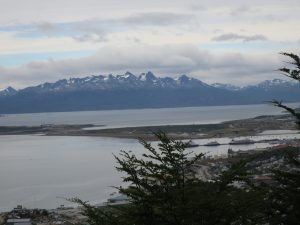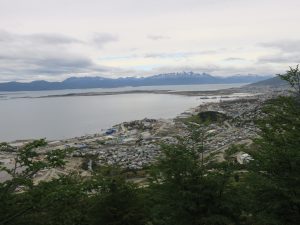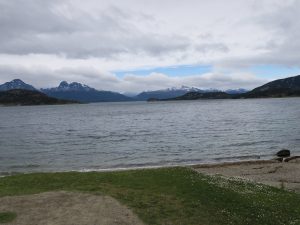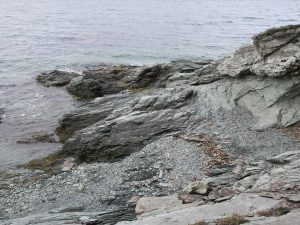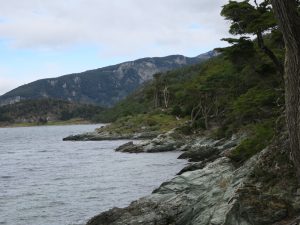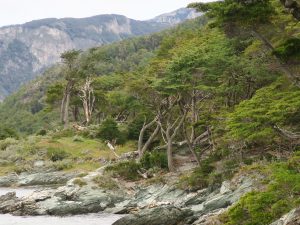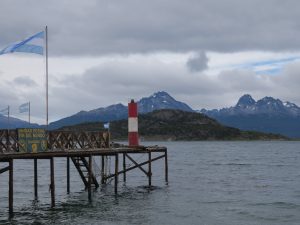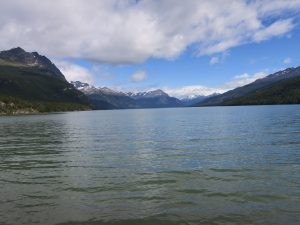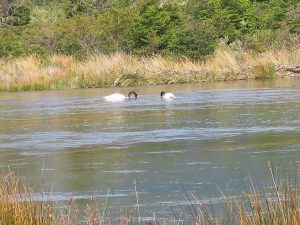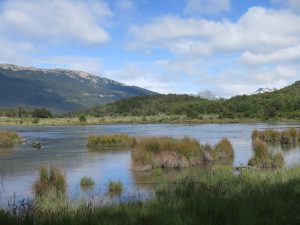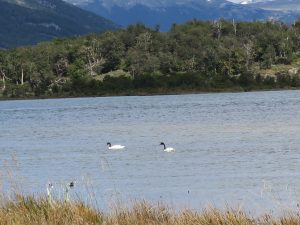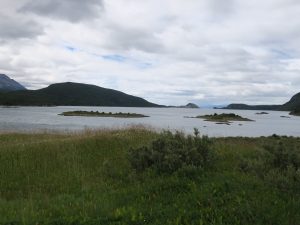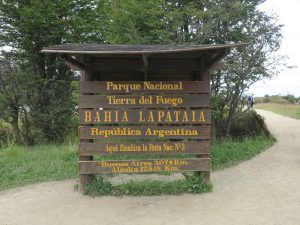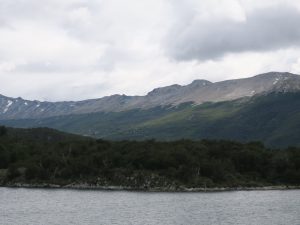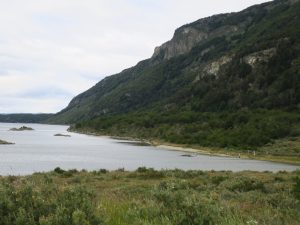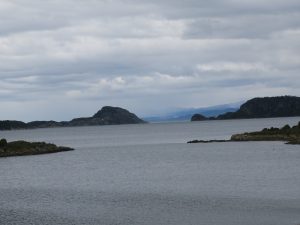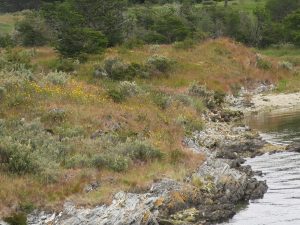At last night’s orientation meeting they told us about an optional trip to Tierra del Fuego National Park. We didn’t sign up for it because we wanted to explore Ushuaia. However after walking through the town last night, we realized that we had seen most of it. So we were able to jump on the tour.
Here are some pictures of Ushuaia taken from our hotel up on the hill. I have circled our ship.
Our guide on the Tierra Del Fuego tour was very good. One of the interesting things we learned about is the problem with beavers. In 1947, fur traders introduced beavers into the area. However because the climate conditions were different from the north, the beaver’s coats were not thick enough and could not be used by the fur traders. So they abandoned the project as well as the beavers. In the last 70 years the beaver population has exploded from 50 to 200,000. They have no natural predators. They fall a lot trees and the issue is that trees grow very slowly because of the harsh weather. The government is allowing beaver hunting in an effort to eliminate the beavers.
Our first stop in the park was a glacier lake. The southernmost post office in the world is located on the shore. Here are some pictures from this stop.
Next we stopped at another lake and took a short walk along the lake where we saw black neck swans. Here are pictures from this stop.
The final stop was at the end of the Pan-America highway which starts in Alaska and ends in Argentina.
After the tour we were dropped off in the town where we went out for a late lunch. Ushuaia is well known for king crab and sea bass. Most of the restaurants have a tank with king crabs crawling around in their window. Our guide recommended Freddy’s Cantina. They had the tank in the window. Rick had grilled sea bass and said it was excellent. I had a salad. We watched other people have crab. They would pull the crab out of the tank and the waiter and customer would weigh the crab and then they would take it off and cook it.
After lunch we went over to the meeting point to get the bus to the ship. Finally the moment we have been waiting for had arrived. We were greeted by the expeditionary leader and had to turn over our passports before being ushered to our cabin.
We had a few minutes to get settled before there was a briefing meeting where we met the expeditionary staff. The staff includes
Hayley Expedition Leader
Adam Expedition Naturalist, specializing in birds
Hannah Expedition Naturalist, specializing in marine mammals
Sophie Expedition Staff, specializing in kayaking
Ewan Expedition Staff, specializing in kayaking
Ashley Expedition Staff
Thomas Expedition Staff, specializing in photography
Jim Expedition Staff, specializing in geology
Tom Ship’s Doctor
Seb Expedition Staff, specializing in history
The ship’s doctor gave us a talk on safety, the importance of good hygiene to reduce an “epidemic” on the ship and, of course, sea sickness.
After the meeting we had our emergency drill. We had to muster with our life jackets in the lounge and then, once we had been counted, we had to go up to our station where we would have gotten into the life boats as they lowered them.
That evening we had a nice dinner. Interestingly they serve everyone at the same time. The seating is open so you can sit with different people at every meal or you can sit alone.

